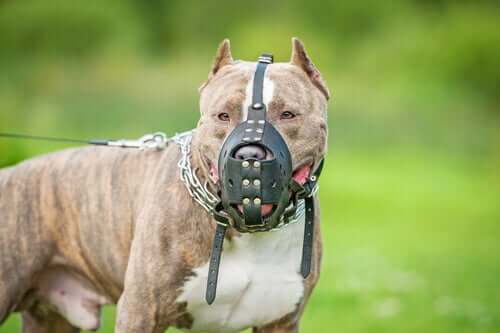Pet Insurance Policies: Liability and Health Coverage


Written and verified by the lawyer Francisco María García
Every pet owner must have adequate insurance coverage for possible damages their pet may cause. The size, history, and temperament of a dog don’t really matter as even a small dog can leave a permanent scar on a small child’s face. An accident can destroy a family, and their financial stability in particular.
There are more and more insurance companies adding policies for animals to their portfolio of products. For this reason, there’s a wide range of coverage available to pet owners who’d like to insure their animals.
Liability pet insurance
Dog owners are liable for injuries their pets may cause only if the owner already knew their dog has a tendency to bite. However, there are states with statutes that make owners liable whether or not they knew the dog had this tendency.
Furthermore, some states and municipalities have “breed specific” statutes that identify breeds such as pit bulls as dangerous; in others, individual dogs can be designated as vicious.
For example, in the USA, there are homeowners’ and renters’ insurance policies that typically cover dog bite liability legal expenses, up to the liability limits of about $100,000 to $300,000. This kind of insurance mainly covers the damages caused to third parties.
High-risk dog breeds
Note that some insurance companies won’t insure homeowners with certain breeds of “dangerous” dogs (e.g. pit bulls). Others decide on a case-by-case basis depending on whether a specific animal is deemed vicious, regardless of its breed.
In fact, some insurers don’t even ask the breed of a dog when writing or renewing homeowners’ insurance. Neither do they don’t track the dog breeds involved in dog bite incidents.

Once a dog bites someone, it becomes a risk and the insurance company may charge a higher premium. Either that, or it won’t renew the homeowner’s insurance policy. All for the purpose of excluding that dog from their coverage.
There are even insurers who are limiting their exposure to these kinds of losses. For example, some companies require a signed liability waiver for dog bites. In contrast, others merely charge higher premiums for homeowners with breeds such as pit bulls and Rottweilers.
There are also companies who just won’t insure homeowners with dogs. Finally, some will cover a pet if the guardian agrees to take the dog to classes to alter their behavior, or restrain their dog with a muzzle, or a chain.
This kind of liability insurance covers the damages to third parties produced by the animals.
The best pet liability insurance policies
Everyone who has a dog has to make sure their insurance covers all damages that it may cause. They should also make sure that the limits that are high enough. There should be at least $100,000 for liability, plus $1,000 for no-fault medical payments. Of course, it’s much better to have at least $300,000 for liability, plus $5,000 for those medical expenses.
You can do this either with a single policy or by a combination of a few. For example, the base policy could be homeowners, renters or even canine liability policy. The secondary policy in this case would be an “umbrella” policy.
Some guidelines:
- You can’t get homeowners or a renters policy? Then get a canine liability policy.
- If your policy doesn’t cover animal-related damages then get an umbrella policy. These policies will fill the gaps in your homeowner’s insurance policy. You could also get a canine liability policy because it covers damages caused by your dog. Also, if you consider an umbrella policy, do check that it provides coverage for an accident caused by your dog as some umbrellas don’t include it.
- However, if you do want an umbrella policy but can’t get one with dog damage coverage, then get a canine liability policy.
- And, if your homeowner’s policy covers damage by dogs, but the limit of liability coverage is not high enough, then get an umbrella policy. At least get an excess policy; their premiums are low even for coverage up to $1 million.
- Finally, if your umbrella policy doesn’t provide enough coverage, then supplement it with an excess policy.

Pet health insurance
These days, there are many providers who offer coverage for accidents, illnesses, and hereditary conditions. However, there are many other things your pet might need. Treatment for dental disease, for example, or help with a behavioral issue. Make sure your insurance covers anything you’d want it to cover.
Make sure you know what’s not included. For instance, some providers won’t reimburse you for consultancy fees, even though these are part of nearly every veterinary bill.
Also, look into how they handle pre-existing conditions. These are the conditions that happened before coverage started or during the waiting period.
What’s covered in this kind of insurance?
- Accident coverage takes care of costs for injuries and emergencies related to accidents.
- Illness coverage reimburses you for expenses of major and minor illnesses.
- Costs of inherited conditions and birth defects that don’t show symptoms when a pet is still young but show up later in their life.
- Alternative therapies such as acupuncture, physiotherapy, chiropractic care, rehabilitative therapy, hydrotherapy, and low-level laser therapy.
- Behavioral issues, costs of veterinary visits for concerning behaviors that may be related to anxiety or compulsive behavior.
- Chronic conditions such as allergies, diabetes, and cancer.
What’s not covered
- Pre-existing conditions
- Cosmetic procedures
- Breeding costs
- Preventive care
Requirements
Most pet insurance companies will ask you to comply with certain requirements before they insure an animal:
- The pet should be over three months old and less than nine years old.
- It should be in good health, confirmed by a licensed veterinarian.
- You should have an up to date copy of your dog’s medical records card with all vaccines up to date.
Keep in mind that these requirements may vary depending on the company and the type of animal insured. Talk to pet insurance companies directly to find out more about their conditions.
All cited sources were thoroughly reviewed by our team to ensure their quality, reliability, currency, and validity. The bibliography of this article was considered reliable and of academic or scientific accuracy.
- mmgr.info. Consejos y obligaciones para propietarios de perros. Extraído de: http://www.mmgr.info/wp-content/uploads/2017/03/download_675_1-2.pdf
- EVELYN RODRÍGUEZ LÓPEZ, MANUEL RUIZ GRANADOS. Deontología y Veterinaria Legal. 2010-2011. Seguro animal. Extraído de: https://ddd.uab.cat/pub/trerecpro/2011/80077/seguro_animal_animal_seguro.pdf
This text is provided for informational purposes only and does not replace consultation with a professional. If in doubt, consult your specialist.